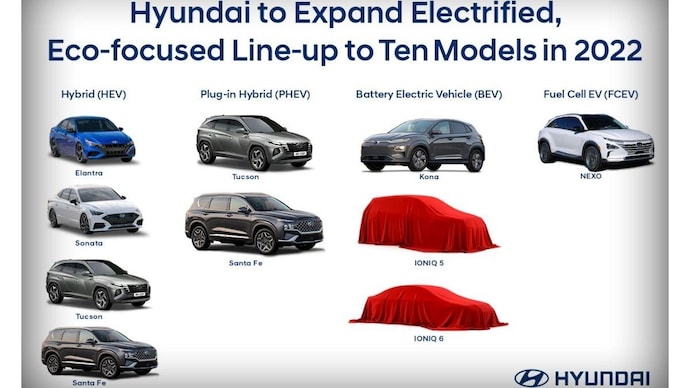Hyundai Motor Company, one of the largest automobile manufacturers globally, has made significant strides in the Indian automotive market since its entry in 1996. With popular models like the Santro, i10, and Creta, Hyundai has cemented its place as a major competitor to Maruti Suzuki in India. The company has also embraced electric vehicle (EV) technology and premium offerings, reflecting its adaptability to global and local market trends. In this detailed SWOT analysis, we explore Hyundai's strengths, weaknesses, opportunities, and threats to understand its current market position and potential future trajectory.
Strengths:
Strong Global Presence and Brand Image
Hyundai boasts a robust global footprint, operating in over 200 countries, which gives it a well-diversified revenue stream and reduces dependency on any single market. In India, Hyundai enjoys a strong brand image as a premium and technologically advanced carmaker. Its models are often associated with quality, innovation, and reliability, appealing to both urban and rural buyers.
Innovative Product Line and Technology
Hyundai is known for its focus on innovation, consistently incorporating the latest technology in its vehicles. Models like the Creta, Venue, and i20 have become benchmarks in their respective segments for features such as advanced infotainment systems, safety features like multiple airbags, and connectivity options like Blue Link, which enhances the driving experience. Hyundai’s commitment to cutting-edge technology gives it an edge over many competitors.
Early Adoption of Electric Vehicles (EVs)
Hyundai was among the first companies in India to introduce electric vehicles with its Kona Electric model. This early entry into the EV space positions Hyundai well for the future, as governments globally push for greener transportation alternatives. The company’s ongoing research and development into EV technology make it a leader in this space, especially in emerging markets like India.
Strong Manufacturing and R&D Capabilities
Hyundai’s state-of-the-art manufacturing facility in Chennai is one of the most advanced automobile plants in India, known for its efficiency and high production capacity. The company's emphasis on research and development (R&D), particularly in eco-friendly and future mobility solutions, enhances its ability to innovate and adapt to evolving market conditions.
Wide Product Range with Popular Models
Hyundai’s product portfolio in India is diverse, spanning from small hatchbacks like the Santro and Grand i10 to premium SUVs like the Tucson and Creta. The company’s ability to cater to various segments of the Indian market, from entry-level buyers to those looking for premium offerings, is a significant advantage. Its models consistently rank among the top-sellers in their respective categories, reflecting the brand's appeal across demographics.
Weaknesses:
Higher Pricing Compared to Competitors
Although Hyundai offers advanced features and high-quality builds, its cars tend to be priced higher than many of its competitors, particularly Maruti Suzuki. This premium pricing can deter price-sensitive buyers, especially in the highly competitive small car and entry-level segments, where affordability is a critical factor.
Overdependence on Certain Models
While Hyundai has a diverse lineup, its success in India is heavily reliant on a few key models like the Creta, Venue, and i20. Any dip in the popularity or sales of these models due to competition or market shifts could have a significant impact on Hyundai's overall performance. Overreliance on these flagship models exposes the company to risks associated with changing consumer preferences in specific segments.
Lagging in Rural Market Penetration
Despite its widespread urban popularity, Hyundai's presence in India’s rural markets lags behind competitors like Maruti Suzuki. Hyundai’s service and dealership network, while extensive, does not yet match the reach of Maruti, particularly in remote areas. This gap in rural penetration limits its ability to tap into the growing aspirations of rural consumers, who are becoming increasingly important in the Indian automotive market.
Perceived High Maintenance Costs
While Hyundai cars are known for their features and quality, they are often perceived to have higher maintenance costs compared to more affordable brands like Maruti Suzuki. This perception can be a deterrent for middle-class buyers, who prioritize long-term affordability and low maintenance in their purchasing decisions.
Opportunities:
Expanding the Electric Vehicle Portfolio
As the Indian government pushes for greater adoption of electric vehicles, Hyundai is well-positioned to capitalize on this trend. With its successful global experience in the EV market and the Kona Electric already available in India, Hyundai has the opportunity to expand its electric vehicle lineup at more affordable price points. Developing mass-market EVs in India could open new revenue streams and allow Hyundai to compete directly with early adopters like Tata Motors.
Tapping Into Growing SUV Demand
SUVs are rapidly gaining popularity in India, with consumers increasingly preferring compact and mid-size SUVs for their blend of style, space, and practicality. Hyundai’s models like the Creta and Venue have already been successful in this space, but the company can further capitalize on this trend by introducing more models with advanced features and attractive price points.
Expanding Rural Market Presence
India’s rural market offers significant untapped potential for Hyundai. By expanding its dealership and service network in rural and semi-urban areas, Hyundai can attract more buyers from these regions, where disposable incomes are rising, and car ownership aspirations are growing. Tailoring marketing strategies to rural consumers and offering more entry-level vehicles could enhance Hyundai's market share.
Leveraging Technological Leadership in Autonomous Driving
Hyundai has made significant strides in autonomous driving technology and advanced driver assistance systems (ADAS). While the Indian market may not yet be ready for full-scale autonomous vehicles, introducing advanced safety and driving features in affordable models can appeal to tech-savvy consumers and differentiate Hyundai from its competitors.
Threats:
Intensifying Competition
The Indian automobile market is fiercely competitive, with both domestic players like Tata Motors and Mahindra and global players like Kia, Toyota, and MG Motor consistently launching new models with competitive features and pricing. These competitors are targeting similar segments as Hyundai, particularly in the compact SUV and premium hatchback categories, making it harder for Hyundai to maintain its market share.
Regulatory Changes and Environmental Laws
As the Indian government tightens emissions regulations, including the adoption of BS-VI norms and the push for electric vehicles, Hyundai will need to invest heavily in R&D and manufacturing upgrades. While Hyundai is better prepared than some competitors, the constant changes in regulations could increase operational costs and put pressure on the company’s profit margins.
Economic Volatility and Rising Costs
The Indian automotive market is sensitive to economic fluctuations. Rising fuel prices, inflation, and interest rates can adversely affect consumer purchasing power, particularly in the middle-class and entry-level segments. Additionally, supply chain disruptions, rising raw material costs, and currency fluctuations could lead to increased production costs, squeezing Hyundai’s profitability.
Shifting Consumer Preferences Toward Safety and Luxury
As Indian consumers become more informed, there is a growing demand for cars with enhanced safety features and luxury elements. Hyundai will need to continuously innovate and upgrade its models to meet these evolving preferences. Failing to do so could lead to customers gravitating toward competitors offering more advanced safety features and luxury offerings, especially in the premium market.
Conclusion:
Hyundai Motor Company has successfully positioned itself as a leader in the Indian automotive market, known for its innovation, quality, and advanced technology. However, with intensifying competition and changing consumer preferences, the company must address challenges like premium pricing and limited rural reach to maintain its strong market position. By focusing on expanding its electric vehicle lineup, enhancing its presence in rural markets, and introducing more advanced features in its models, Hyundai can continue to thrive and grow in the dynamic Indian automobile landscape.






No comments: